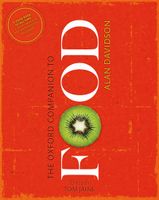Advertisement
Cordon Bleu
Published 2014
In the course of the 19th century its scope was gradually focused onto cooks alone, and for the French it was now denoting precisely a very skilful female cook (une cuisinière très-habile). At that time only professional female cooks could be cordons bleus, but in the 20th century, in France, the term has been used rather of gifted amateur cooks, and a professional woman cook would prefer to be chef (a title for long withheld from women) or just cuisinière. Outside France, in contrast, anyone, whether man or woman, who shows a special aptitude for cooking is likely to be pleased at being called cordon bleu, although chefs already well known would probably feel that it was a distinction more appropriate for lesser beings than for themselves. In 1895, Marthe Distell founded the first Cordon Bleu school in Paris, to instruct the daughters of the bourgeoisie in the art of cooking. Since then, similar schools have opened in England (1933), the USA (1942), and many other countries. See also cookery schools.


